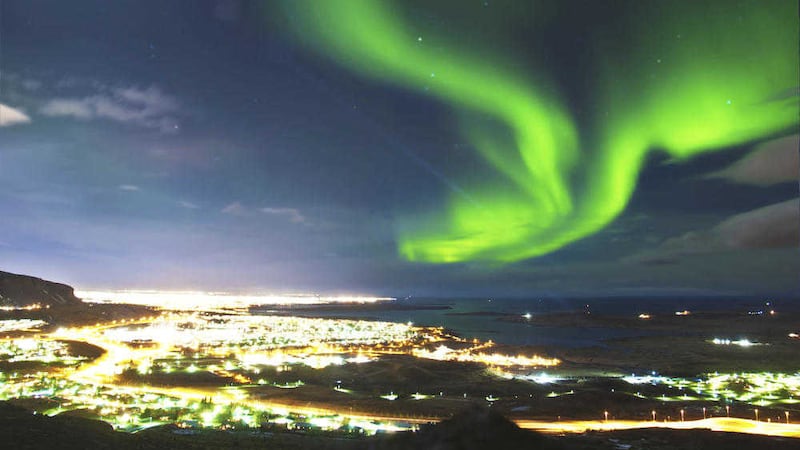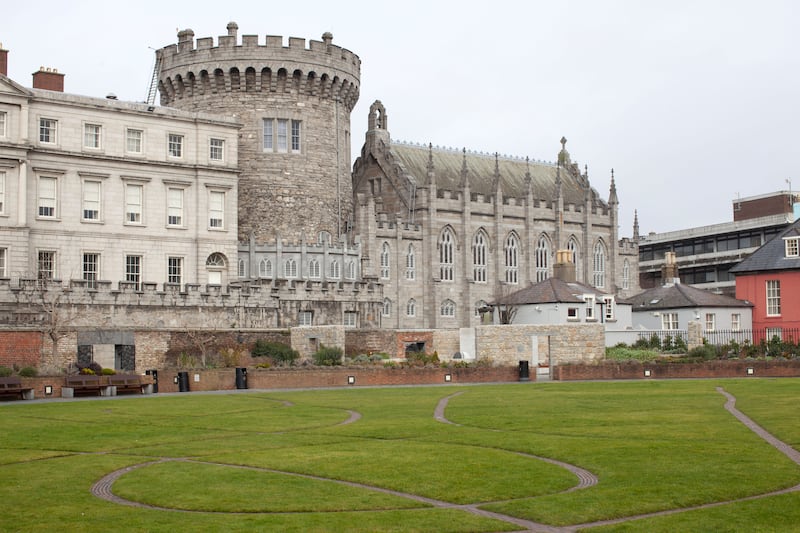ICELAND is proud to be the country of fire and ice, so it is disappointing to arrive at the tail end of winter to find a storm has turned banks of snow into grey slush.
However, as the locals like to say, if you don't like the weather, wait 15 minutes and it will be completely different.
And so it proved. By the next morning an icy wind and gentle scattering of snow had refreshed the landscape and the winter wonderland sought after by those fleeing greyer, damper climes has been restored.
Until recently, Iceland only topped dream holiday destinations lists for hardy survivalist types, whose desire to experience some of the Earth’s most spectacular show-stoppers offset relative difficulties in getting there and fairly basic accommodation.
However, the country's spectacular boom and bust – as dramatic as any scenery – has been a boon to the casual traveller looking for an easy and comfortable taste of wilderness.
Icelanders are slightly bemused but delighted to find themselves outnumbered three to one by visitors keen to share nature's bounty. This has led to a mini building boom, which concerns the more wary who fear a replay of the last false dawn that was its banking crisis.
Almost 12 per cent of the total workforce is in tourism-related industries and the industry is estimated at more than 5 per cent of Icelandic GDP and almost 30 per cent of its export revenue.
For the visitor what this means Reykjavik is buzzing in February, resembling a busy Alpine ski town, with the tourists clad in brightly coloured warm-weather gear tramping up and down its sloping snowy streets.
The capital is a charming, low-key conurbation, where quaint wooden period buildings in the centre gives way to slicker Scandi-chic mid-rise modernity – land is so plentiful that there is no need to build skyscrapers.
It is refreshingly free of US/UK shopping and eatery chains (although the determined fast-food lover can hunt down a Dominos if they're suffering serious withdrawal).
Dining in Reykjavik isn't cheap – nothing in Iceland is – but it's worth sampling local specialities, which include the abundant puffin, various fish and, unexpectedly, lamb. The food is excellent and doesn't have to break the bank.
If you're feeling really adventurous, there is even pickled shark and air-dried fish to nibble on.
Locals are extremely proud of the city's landmarks, which include the little whitewashed house where Ronald Reagan and Mikhail Gorbachov "ended the Cold War" (slight hyperbole) and a hotdog truck where three US presidents (Clinton, Bush and Obama) chowed down.
However, they know that any trip to Iceland is not about a city break and trips out to the major attractions are slickly handled.
The Northern Lights are, of course, the megastars, but be warned, like all temperamental divas there is no guarantee they will make it to the stage.
A lot of it depends on cloud cover and a decision is made early in the day (sometimes even the day before) if the trip is to be cancelled. And where one tour group is cancelled they all tend to be, as Northern Lights hunting is done in packs.
You wrap up warmly and clamber on to your coach and pootle out as far from the city lights as possible, alight and stare at the sky until your guide points out the beginning of the display.
The first sight is disappointing. To the naked eye it looks like a white cloud drifting across the sky. Through a camera lens (though, be warned, not a mobile phone) it takes on a vivid green hue. This, we were told, was the most common of the light displays.
Cold, tired and underwhelmed, I clambered back on to the bus with my Samsung Galaxy before deciding to alight and give it one last go.
My reward was a spectacular kaleidoscope of colour dancing across the night sky. My transformation from bored cynic to giddy believer was instant and absolute.
Also on the Icelandic bucket list is the Blue Lagoon. Not so much Brooke Shields and sandy beaches, but craggy basalt and snow-capped mountains and one of the 25 Wonders of the World.
It’s a man-made lagoon in a lava field in Grindavik, about an hour’s drive from Reykjavik, fed by water from a nearby geothermal power plant which is renewed every two days.
Essentially a spa, it is a slick operation, with microchipped wristbands that function as locker keys and credit cards for poolside drinks.
It’s a surreal experience to step out in sub-zero temperatures and slip into water averaging between 37 and 39 degrees centigrade and milky with minerals like silica and sulphur.
Construction on a new hotel means the views of desolate volcanic rock and snow are currently interrupted by the odd crane, but it’s unobtrusive for the most part and well worth a trip.
Relaxing in a warm outdoor pool where the steam rises up to meet freezing air is lovely interlude in a holiday that will most likely involve a lot of walking. Lying in the shallows with the sun beating down, it almost feels like you’ve stepped through a magic portal to the Caribbean.
Also well worth a visit are the Golden Falls – Gullfoss – a vast, majestic waterfall that is truly breathtaking.
You can take it in on a Golden Circle tour, which also takes in the geothermally active valley of Haukadalur with the geysers Geysir and Strokkur.
Geysir – the original hot spring – has not been active for years, but Strokkur gives a great display every five to 10 minutes. It is one of the many strange links between Ireland and Iceland.
The Geysir area was sold in 1894 by a local farmer to James Craig, later Lord Craigavon and then primarily a whiskey distiller. He was the first to monetise the area, building large fences around the site and charging an entrance fee to visitors.
He gifted it to a friend a year later who dropped the fee and left it to a nephew who in turn sold it in 1935 to a film director, who then donated it to the Icelandic people in perpetuity.
Craig wasn’t the first Irishman in Iceland. In fact, local legend has it that the first people to settle there were eighth century Irish monks seeking to escape the hustle and bustle of Ireland in the Middle Ages.
And when the Vikings came from Norway they stopped off to pick up some Irish women to serve as slaves and wives.
Indeed, recent evidence suggests that approximately 60 per cent of the Icelandic maternal gene pool is derived from Ireland and Scotland.
Under the circumstances it seems almost rude not to pop over and say hello to the relatives.
FACT FILE
:: Bimpe Archer went on a four-night 'Unique Iceland tour in search of the Northern Lights' with Travel Solutions. Prices from £399 pps
:: Also on offer is Golden Circle Tour (6-8hrs) – £61 pp; Blue Lagoon (4hrs) inc transfers & entry - £66 pp; Gullfoss, Geysir & Langjokull Snowmobiling (Full day) – £169 pp
:: EasyJet flies out to Keflavik twice a week (Mondays and Fridays – winter; Saturdays and Wednesdays – summer) from Belfast International Airport








